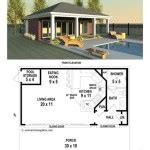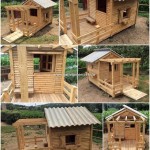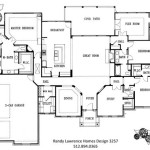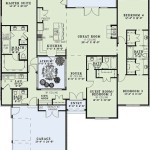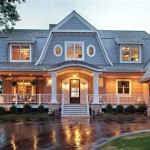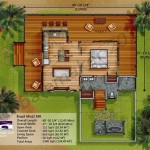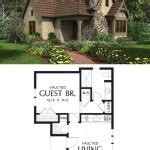Lakefront House Plans are blueprints designed to guide the construction of houses specifically suited for lakeside settings. These plans incorporate features that optimize views of the water, utilize waterfront access, and harmonize with the natural surroundings. For instance, a lakefront house plan might include a spacious deck overlooking the lake, floor-to-ceiling windows framing the water views, and a dock or boat launch for easy access to the water.
Designing a lakefront house requires careful consideration of various factors, such as the topography of the site, the orientation of the house to maximize sunlight and views, and the incorporation of sustainable features that minimize the environmental impact. By collaborating with experienced architects and designers, homeowners can create beautiful and functional lakefront homes that seamlessly blend with the natural beauty of their surroundings.
In this article, we will delve into the intricacies of lakefront house plans, exploring the key design elements, construction considerations, and inspirational design ideas to help you create your dream home by the lake.
When designing a lakefront house, it’s important to consider the following key points:
- Maximize views of the water
- Optimize waterfront access
- Harmonize with natural surroundings
- Consider topography and sunlight
- Incorporate sustainable features
- Create a seamless indoor-outdoor flow
- Design for multiple uses
- Consider privacy and security
- Choose durable materials
- Collaborate with experts
By carefully considering these factors, you can create a beautiful and functional lakefront home that meets your needs and enhances your enjoyment of the water.
Maximize views of the water
One of the key goals of lakefront house plans is to maximize views of the water. This can be achieved through a variety of design elements, including:
- Large windows and doors: Floor-to-ceiling windows and sliding glass doors offer panoramic views of the lake and allow natural light to flood the home. Consider using energy-efficient windows to minimize heat loss and gain.
- Open floor plans: Open floor plans create a seamless flow between indoor and outdoor spaces, allowing you to enjoy the views from multiple vantage points. Avoid placing walls or bulky furniture that could obstruct the views.
- Elevated decks and balconies: Decks and balconies provide elevated vantage points, offering stunning views of the lake and surrounding landscape. Consider incorporating multiple levels of decking to create different perspectives and maximize the enjoyment of the outdoors.
- Terraces and patios: Terraces and patios extend the living space outdoors, allowing you to relax and entertain while enjoying the views. Design these areas with comfortable seating, shade structures, and outdoor lighting to enhance their functionality.
- Rooftop decks: Rooftop decks offer unobstructed, panoramic views of the lake and surroundings. They are particularly suitable for homes with limited outdoor space on the ground level.
In addition to these design elements, consider the orientation of the house on the lot to optimize views of the water. Position the main living areas, bedrooms, and outdoor spaces to face the lake and take advantage of the natural beauty.
By incorporating these strategies into your lakefront house plan, you can create a home that truly embraces the stunning water views and enhances your enjoyment of the lakefront lifestyle.
Optimize waterfront access
In addition to maximizing views of the water, lakefront house plans should also optimize waterfront access. This means creating a seamless connection between the indoor and outdoor spaces, and providing easy access to the water for swimming, boating, and other recreational activities.
- Private dock or pier: A private dock or pier extends your living space onto the water, providing a convenient and safe place to dock your boat, launch kayaks or paddleboards, and enjoy water sports. Consider the size and type of dock that best suits your needs and the characteristics of the waterfront.
- Walk-out basement or patio: A walk-out basement or patio provides direct access to the water from the lower level of the house. This is a great option for homes on sloping lots, as it allows you to take advantage of the natural grade to create a seamless transition between indoor and outdoor spaces.
- Lakeside fire pit or seating area: A fire pit or seating area near the water’s edge creates a cozy and inviting spot to relax, entertain guests, and enjoy the sights and sounds of the lake. Consider incorporating built-in seating, lighting, and shade structures to enhance the functionality and ambiance of this outdoor space.
- Waterfront trails or paths: Waterfront trails or paths provide a scenic and convenient way to explore the shoreline and connect with nature. Consider incorporating trails or paths into your landscape design, leading to secluded spots for picnics, fishing, or simply enjoying the beauty of the lakefront.
By incorporating these design elements into your lakefront house plan, you can create a home that truly embraces the waterfront lifestyle and provides easy access to all that the lake has to offer.
Harmonize with natural surroundings
Lakefront house plans should strive to harmonize with the natural surroundings, respecting the unique characteristics of the site and preserving the beauty of the lakefront environment.
Consider the existing landscape: Before designing your home, take time to observe and appreciate the existing landscape. Note the types of trees, plants, and wildlife in the area. Consider how your house can be positioned and designed to minimize disruption to the natural environment and preserve the existing vegetation.
Use natural materials: Incorporate natural materials such as wood, stone, and glass into the design of your home. These materials blend seamlessly with the natural surroundings and create a warm and inviting ambiance. Consider using locally sourced materials to reduce the environmental impact and support the local economy.
Minimize site disturbance: During construction, take steps to minimize site disturbance and protect the natural environment. Use erosion control measures to prevent soil runoff, and carefully plan the placement of roads, driveways, and other infrastructure to avoid damaging sensitive areas.
Incorporate sustainable features: Implement sustainable features into your home design to reduce the environmental impact and preserve the lakefront ecosystem. Consider using energy-efficient appliances and lighting, installing solar panels, and incorporating rainwater harvesting systems. By embracing sustainable practices, you can minimize your home’s footprint on the environment and protect the lakefront for future generations.
Consider topography and sunlight
When designing a lakefront house, it’s important to consider the topography of the site and the orientation of the house to maximize sunlight and views of the water.
- Maximize solar exposure: Position the house to take advantage of passive solar heating by orienting the main living areas, bedrooms, and outdoor spaces towards the south. This will allow natural light to flood the home and reduce energy consumption for heating and lighting.
- Minimize wind exposure: Consider the prevailing wind patterns and position the house to minimize wind exposure, especially in areas prone to strong winds or storms. This will help reduce heat loss and improve energy efficiency.
- Maximize views: Orient the house to maximize views of the water and surrounding landscape. Place the main living areas, bedrooms, and outdoor spaces to face the lake and take advantage of the natural beauty. Consider using large windows and doors to frame the views and create a seamless connection between indoor and outdoor spaces.
- Utilize natural slopes: If the site has a natural slope, consider incorporating it into the design of the house. A sloped lot can provide opportunities for walk-out basements, terraced gardens, and other unique features that enhance the functionality and aesthetic appeal of the home.
By carefully considering the topography and sunlight, you can create a lakefront house that is both energy-efficient and visually stunning, maximizing the enjoyment of the natural surroundings.
Incorporate sustainable features
Incorporating sustainable features into your lakefront house plan is essential for minimizing the environmental impact of your home and preserving the beauty of the lakefront ecosystem for future generations.
- Use energy-efficient appliances and lighting: Choose Energy Star-rated appliances and LED lighting to reduce energy consumption and lower your utility bills. Energy-efficient appliances use less energy to operate, while LED lighting lasts longer and uses up to 80% less energy than traditional incandescent bulbs.
- Install solar panels: Solar panels convert sunlight into electricity, providing a renewable energy source for your home. By installing solar panels, you can reduce your reliance on fossil fuels, lower your energy costs, and contribute to a cleaner environment.
- Incorporate rainwater harvesting systems: Rainwater harvesting systems collect and store rainwater for non-potable uses such as watering the lawn, washing the car, or flushing toilets. By harvesting rainwater, you can reduce your reliance on municipal water supplies and conserve this precious resource.
- Use sustainable building materials: Choose building materials that are sustainably sourced and have a low environmental impact. Consider using recycled materials, reclaimed wood, and products certified by organizations such as the Forest Stewardship Council (FSC).
By incorporating these sustainable features into your lakefront house plan, you can create a home that is both environmentally friendly and cost-effective, while contributing to the preservation of the lakefront environment.
Create a seamless indoor-outdoor flow
Creating a seamless indoor-outdoor flow is essential for lakefront homes, allowing you to fully enjoy the beauty of the water and surrounding landscape. Here’s how to incorporate this design element into your lakefront house plan:
- Use large windows and doors: Floor-to-ceiling windows and sliding glass doors blur the boundaries between indoor and outdoor spaces, creating a sense of openness and bringing the outside in. Large windows offer panoramic views of the lake and allow natural light to flood the home, while sliding glass doors provide easy access to decks, patios, and other outdoor areas.
- Incorporate open floor plans: Open floor plans eliminate walls and barriers between living spaces, creating a more spacious and inviting atmosphere. This design allows for easy movement between different areas of the home and provides clear sightlines to the outdoors. An open floor plan is particularly effective in lakefront homes, as it allows for uninterrupted views of the water from multiple vantage points.
- Build decks and patios: Decks and patios extend the living space outdoors, providing additional areas to relax, entertain guests, and enjoy the fresh air and lake views. Decks can be constructed from a variety of materials, including wood, composite, or concrete, and can be customized to suit your specific needs and preferences. Patios are typically constructed from pavers, concrete, or stone, and offer a more permanent outdoor living space.
- Create outdoor kitchens and dining areas: Outdoor kitchens and dining areas allow you to enjoy the beauty of the outdoors while cooking and dining. An outdoor kitchen can be equipped with a grill, sink, refrigerator, and other amenities, while an outdoor dining area can be furnished with a table, chairs, and comfortable seating. These outdoor spaces extend the functionality of the home and provide a seamless transition between indoor and outdoor living.
By incorporating these design elements into your lakefront house plan, you can create a home that truly embraces the indoor-outdoor lifestyle and allows you to fully enjoy the beauty of your surroundings.
Design for multiple uses
Lakefront homes offer a unique opportunity to enjoy a variety of activities, from swimming and boating to fishing and entertaining. To make the most of your lakefront property, consider designing your home for multiple uses, creating flexible spaces that can adapt to your changing needs and interests.
- Create a flexible great room: The great room is the central gathering space in many lakefront homes, and it should be designed to accommodate a variety of activities. Choose furniture that can be easily rearranged to create different seating configurations, and consider incorporating built-in features such as bookcases, storage benches, and a fireplace to enhance functionality and comfort. By designing a flexible great room, you can create a space that is perfect for entertaining guests, relaxing with family, or simply enjoying the views of the lake.
- Incorporate a multipurpose sunroom: A sunroom is a great way to enjoy the outdoors without having to deal with the elements. Sunrooms can be used for a variety of purposes, such as reading, relaxing, dining, or even sleeping. When designing a sunroom, consider the orientation of the house to maximize natural light and views of the lake. Also, choose materials that are durable and easy to maintain, as sunrooms can experience extreme temperatures and moisture levels.
- Create a walk-out basement: A walk-out basement provides direct access to the outdoors, making it a great option for lakefront homes. Walk-out basements can be used for a variety of purposes, such as creating a family room, game room, or home theater. They can also be used to house guest bedrooms or a home office. When designing a walk-out basement, consider the grade of the lot and the orientation of the house to ensure that there is adequate natural light and drainage.
- Design a rooftop deck: A rooftop deck offers panoramic views of the lake and surrounding landscape. Rooftop decks can be used for a variety of purposes, such as entertaining guests, sunbathing, or simply relaxing and enjoying the views. When designing a rooftop deck, consider the weight capacity of the roof and the need for wind protection. Also, choose materials that are durable and weather-resistant.
By designing your lakefront home for multiple uses, you can create a space that is both flexible and functional, allowing you to enjoy all that your waterfront property has to offer.
Consider privacy and security
When designing a lakefront house, it’s important to consider privacy and security to ensure the safety and well-being of your family and property. Here are key points to keep in mind:
- Landscaping for privacy: Strategic landscaping can provide privacy from neighbors and passersby. Plant dense hedges, trees, or shrubs around the perimeter of your property to create a natural barrier. Consider using evergreens for year-round privacy. You can also use trellises or pergolas covered with vines to create privacy screens on decks or patios.
- Fencing and gates: Fences and gates provide a physical barrier around your property, deterring trespassers and enhancing security. Choose a fence that is tall enough to provide privacy but not so tall that it obstructs your views of the lake. Consider using a combination of materials, such as wood, metal, or vinyl, to create a fence that is both aesthetically pleasing and functional.
- Lighting: Good lighting is essential for security and can help deter crime. Install outdoor lighting around the perimeter of your property, including motion-activated lights that will turn on when someone approaches. Consider using solar-powered lights to save energy and reduce maintenance.
- Security systems: Consider installing a security system to monitor your home and property. Security systems can include motion sensors, door and window sensors, and surveillance cameras. You can also connect your security system to a monitoring service for added peace of mind.
By considering these privacy and security measures when designing your lakefront house plan, you can create a safe and secure haven for your family and enjoy the peace and tranquility of your waterfront property.
Choose durable materials
When building a lakefront home, it’s essential to choose durable materials that can withstand the harsh elements and maintain their beauty over time. Here are key considerations to keep in mind:
Exterior materials: The exterior of your lakefront home should be able to withstand moisture, UV rays, and extreme temperatures. Consider using materials such as fiber cement siding, vinyl siding, or natural stone veneer. These materials are resistant to rot, fading, and pests, ensuring the longevity of your home’s exterior.
Roofing materials: The roof of your lakefront home should be able to withstand high winds, rain, and snow. Choose roofing materials such as asphalt shingles, metal roofing, or slate tiles. These materials are durable, weather-resistant, and can last for many years.
Windows and doors: Windows and doors are essential for natural light and ventilation, but they can also be vulnerable to the elements. Choose windows and doors made from durable materials such as vinyl, fiberglass, or aluminum. These materials are resistant to moisture, fading, and warping, ensuring the longevity of your windows and doors.
Decking materials: If your lakefront home includes a deck or patio, choose decking materials that are durable and weather-resistant. Consider using materials such as composite decking, pressure-treated lumber, or natural stone tiles. These materials are resistant to rot, fading, and moisture, ensuring the longevity of your outdoor living space.
By choosing durable materials for your lakefront home, you can ensure that your home will withstand the test of time and maintain its beauty for years to come.
Collaborate with experts
When designing and building a lakefront home, it’s crucial to collaborate with a team of experts to ensure the best possible outcome. These experts can guide you through the entire process, from selecting the perfect site to finalizing the construction plans.
Architects
An experienced architect is essential for creating a lakefront house plan that meets your specific needs and complements the unique characteristics of your property. They will work with you to develop a design that maximizes the views of the lake, optimizes natural light, and incorporates sustainable features. Architects can also help you navigate building codes and regulations, ensuring that your home is safe and compliant.
Engineers
Structural engineers are responsible for ensuring the structural integrity of your lakefront home. They will calculate the loads and forces acting on the building and design the foundation, walls, and roof to withstand these forces safely. Engineers also work closely with architects to ensure that the design is both aesthetically pleasing and structurally sound.
Landscape architects
Landscape architects can help you create a beautiful and functional outdoor space that complements your lakefront home. They can design walkways, patios, decks, and gardens that enhance the natural beauty of the property and provide you with spaces to relax, entertain, and enjoy the outdoors.
Interior designers
Interior designers can help you create a cohesive and stylish interior for your lakefront home. They can work with you to select furniture, fabrics, and finishes that reflect your personal style and create a comfortable and inviting living space. Interior designers can also help you maximize natural light and incorporate sustainable materials into your home’s interior.
By collaborating with a team of experts, you can ensure that your lakefront home is not only beautiful and functional but also safe, sustainable, and built to last.










Related Posts

